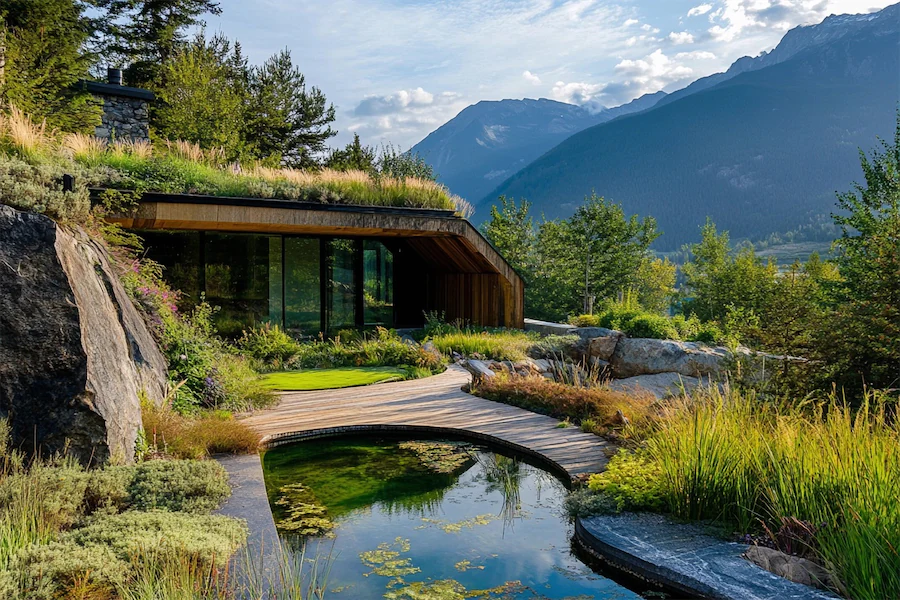A Mountain Retreat Garden is a thoughtfully designed outdoor space that harmoniously blends with the natural mountainous environment, creating a serene sanctuary for relaxation and connection with nature. By incorporating native plants, natural materials, and sustainable practices, these gardens offer both aesthetic appeal and ecological benefits.
History and Origins of Mountain Retreat Gardens
The concept of mountain retreat gardens has evolved from traditional alpine gardens, where the challenging terrain and climate necessitated the use of hardy, native plants. Over time, designers have embraced these constraints, creating landscapes that celebrate the unique beauty of mountainous regions. Today, mountain retreat gardens are cherished for their tranquility and their ability to provide an escape from urban life.
Key Features of Mountain Retreat Gardens
- Native Plantings: Utilizing indigenous plants ensures resilience and supports local wildlife. Species such as conifers, wildflowers, and hardy shrubs are commonly featured.
- Natural Materials: Incorporating elements like stone pathways, wooden structures, and rock formations helps the garden blend seamlessly with its surroundings.
- Water Features: Adding streams, ponds, or waterfalls introduces soothing sounds and enhances the sense of tranquility.
- Terraced Landscaping: Creating terraces accommodates slopes and prevents erosion, while providing flat areas for planting and recreation.
Applications of Mountain Retreat Gardens
- Private Residences: Homeowners can design their properties to reflect the natural beauty of the mountainous landscape, creating personal havens.
- Resorts and Lodges: Hospitality venues can enhance guest experiences by offering immersive natural settings that promote relaxation and well-being.
- Public Parks: Urban planners can develop mountain-inspired gardens within city parks to provide residents with accessible natural retreats.
Considerations When Designing a Mountain Retreat Garden
- Climate Adaptation: Select plants that are suited to the specific altitude and weather conditions of the area.
- Soil Management: Assess and amend soil as necessary to support plant health, considering factors like drainage and nutrient content.
- Sustainability: Implement eco-friendly practices, such as rainwater harvesting and the use of organic materials, to minimize environmental impact.
- Maintenance: Plan for ongoing care, including pruning, mulching, and monitoring for pests, to ensure the garden remains healthy and attractive.
Conclusion
Embracing the mountain retreat garden style allows for the creation of peaceful and sustainable landscapes that celebrate the inherent beauty of mountainous regions. By thoughtfully integrating native plants and natural materials, these gardens offer restorative spaces that foster a deep connection with nature.
